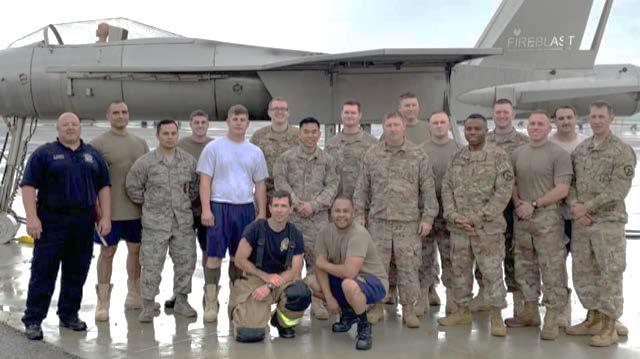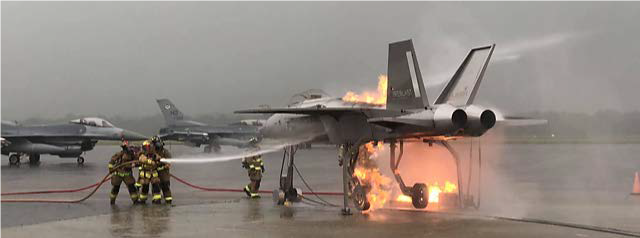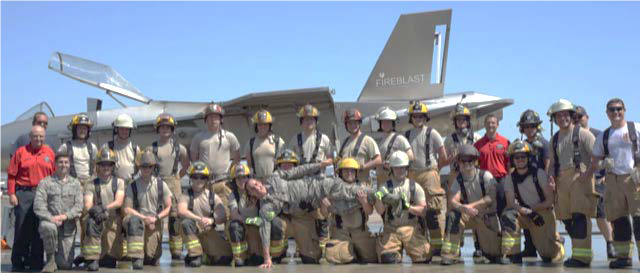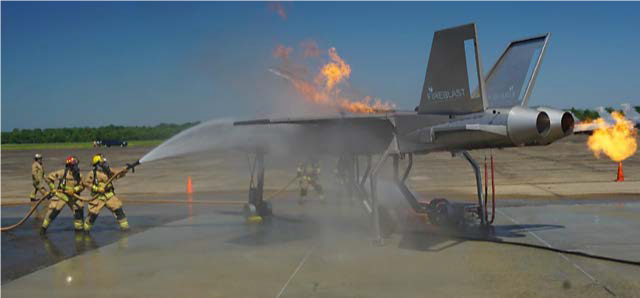The Next Generation Training Prop
Aircraft emergencies are extremely hazardous when ordinance is involved; the risk analysis becomes almost incalculable. Department of Defense/Military Fire Departments may deal with these emergencies more frequently, but they remain high risk/low frequency emergencies. Pit fires were originally used to help simulate those dangerous and potentially catastrophic events but were inherently unpredictable and perilous themselves.

The use of training pit fires and crude burning products were determined harmful to firefighters and the environment and have recently been replaced by smart trainers using cleaner burning fuels. Mobile Aircraft Firefighting Training Devices (MAFT-D) are utilized to facilitate aircraft firefighting and aircraft rescue in a controlled environment. This controlled environment affords emergency personnel the opportunity to achieve specific performance objectives with or without a fire. Naval Air Station Joint Reverse Base (NASJRB) New Orleans Fire and Emergency Services (F&ES) received a newer generation MAFTD, manufactured by Fireblast Global in Corona, CA. Fireblast Global created this MAFTD to replicate real life fighter aircraft emergencies with a specific focus on the F-18. Emergency personnel are now able to conduct practical hands-on lifesaving training as opposed to simply simulating critical mission tasks.

This device allows our Aircraft Rescue Firefighters (ARFF) to satisfy their live fire training requirements. With a little planning and imagination, several critical training objectives can be accomplished in a single evolution. NASJRB New Orleans F&ES has been able to maintain all 50 active members’ monthly training for over two year. Once word of this new trainer hit the military firefighter community, New Orleans trained over ten different reserve units all over the United States, from the Portland, OR 142nd Fighter Wing Fire Department to the Gulfport, MS 209th SOCES.

Older complex MAFT-D training devices require significant set-up and tear down time; are becoming less reliable, often inoperable; and are expensive and time consuming to repair. Further, extended out of service time prevents departments from meeting annual live fire training requirements. This new generation of trainers have no firing up sequence, are operated by one person with a hand held controller, and each component has the ability to function independently. Now, instead of a multitude of lines there is a single electrical power supply and, depending on the evolution, a single fuel line.
If there is a component failure, the operator can simply remove the firebox from the malfunctioning component and replace it with a firebox from another component. Because the firebox components are interchangeable, there is limited or no down time. In addition, in our ever-changing technologic atmosphere, Fireblast Global engineered its MAFTD to have future enhancements and modifications. This will increase the device’s longevity, but most importantly, save on capital expenses and limit out of service time.

Firefighters will no longer have to fear approaching an F-18 or any other fighter aircraft because they are unfamiliar with the aircraft’s features. With this training aid, the Navy is once again leading the world in innovative training with a real commitment to its training programs.
This is truly the MAFTD of the future.
Visit https://www.cnic.navy.mil/content/dam/cnic/hq/pdfs/nfes/Navy-FES-Newsletter-June-2019.pdf to check out the original article from the CNIC
